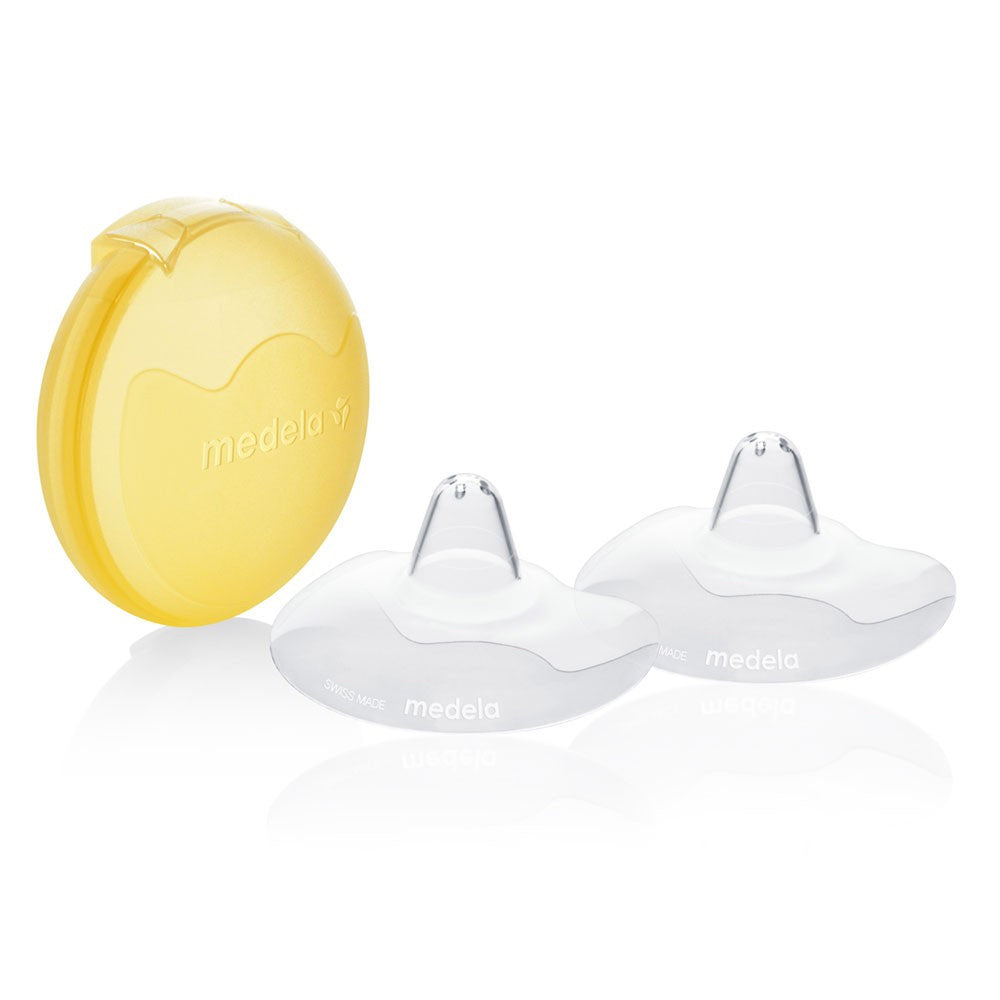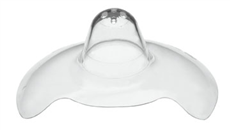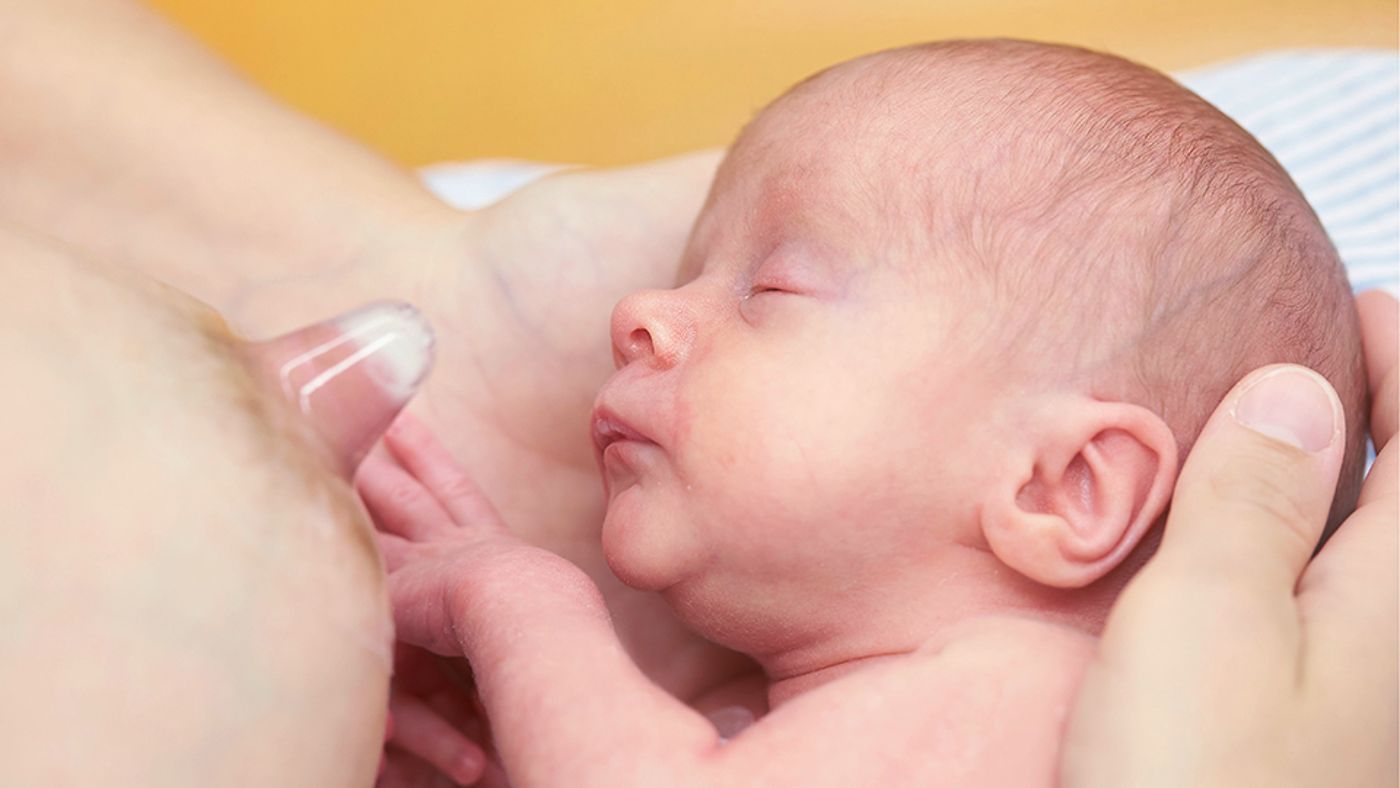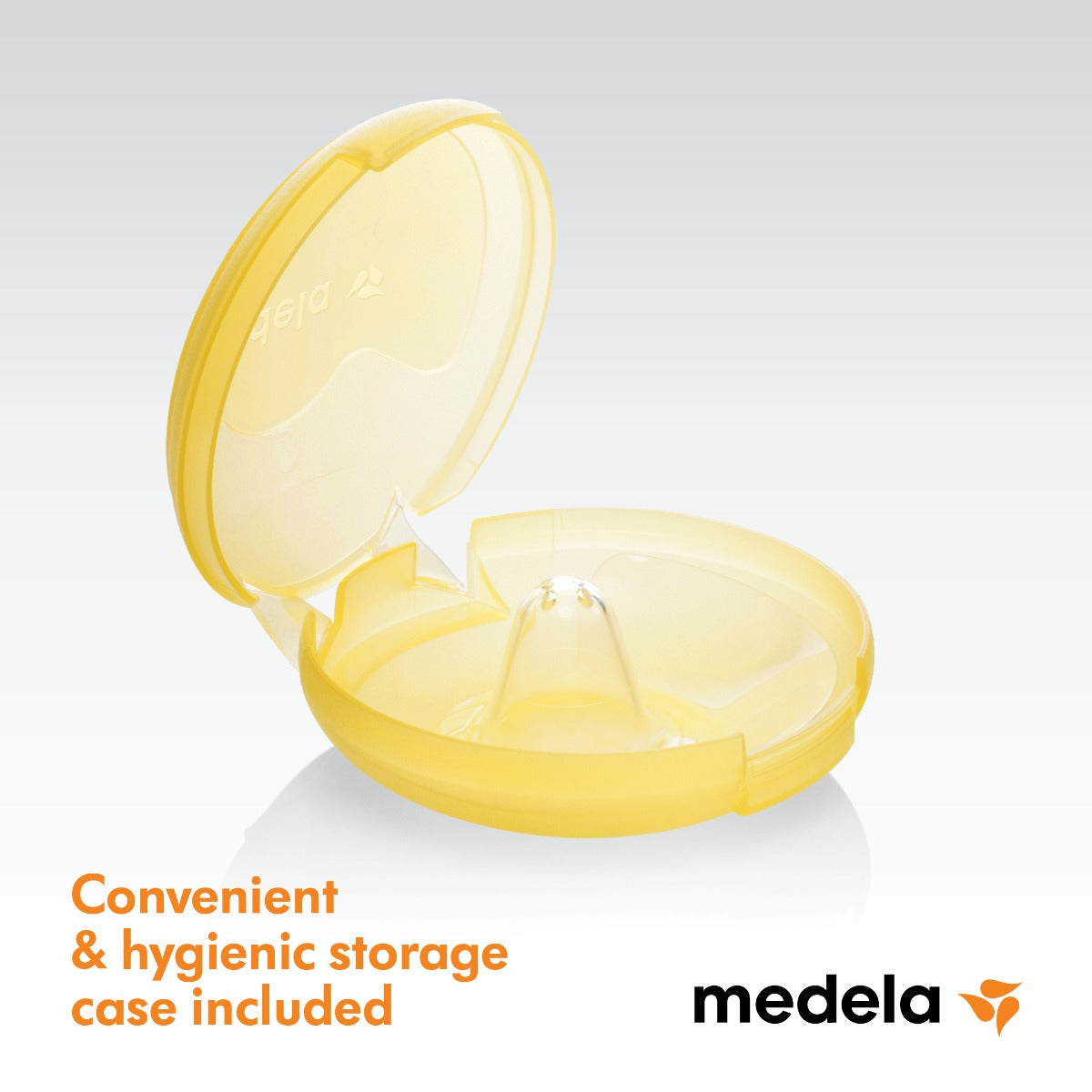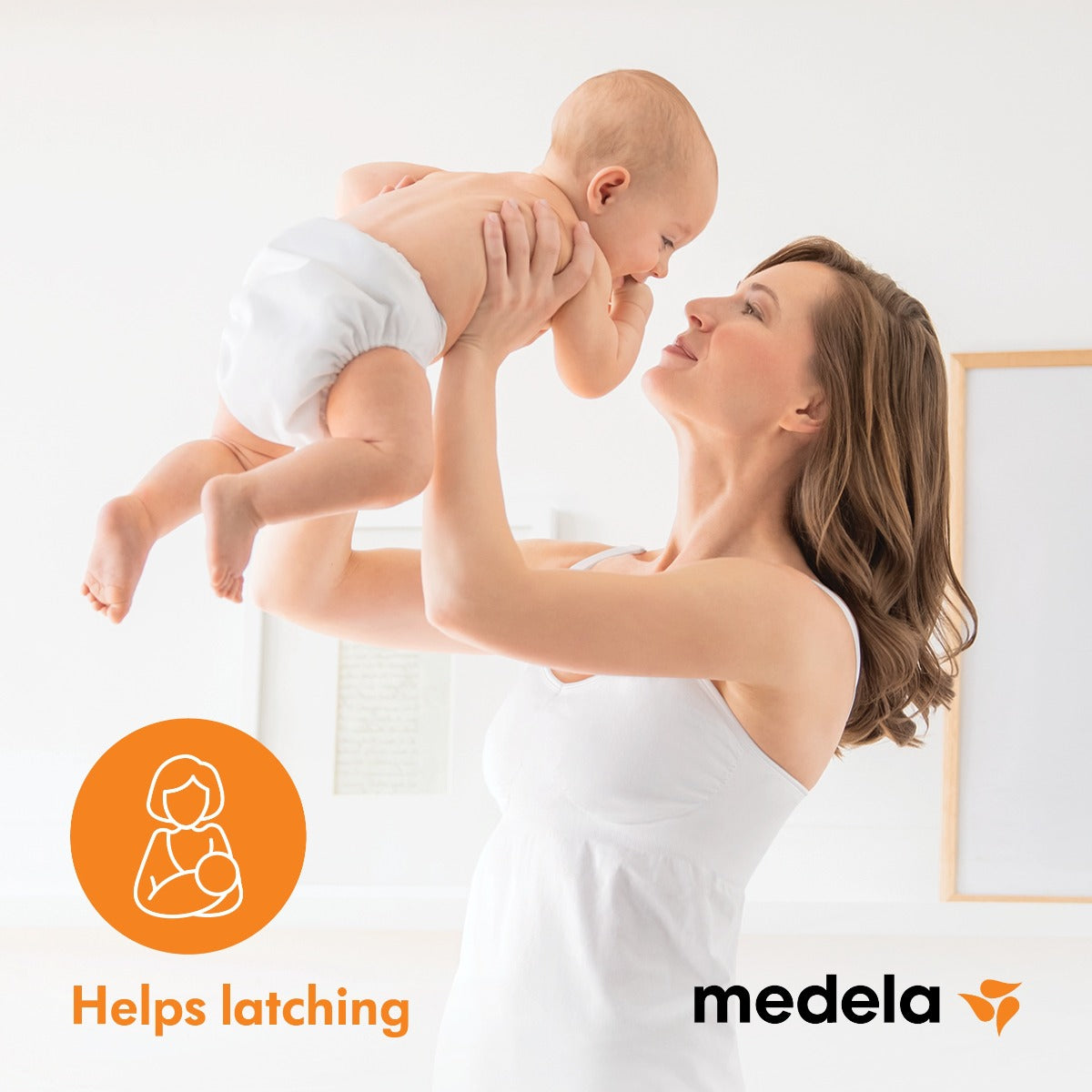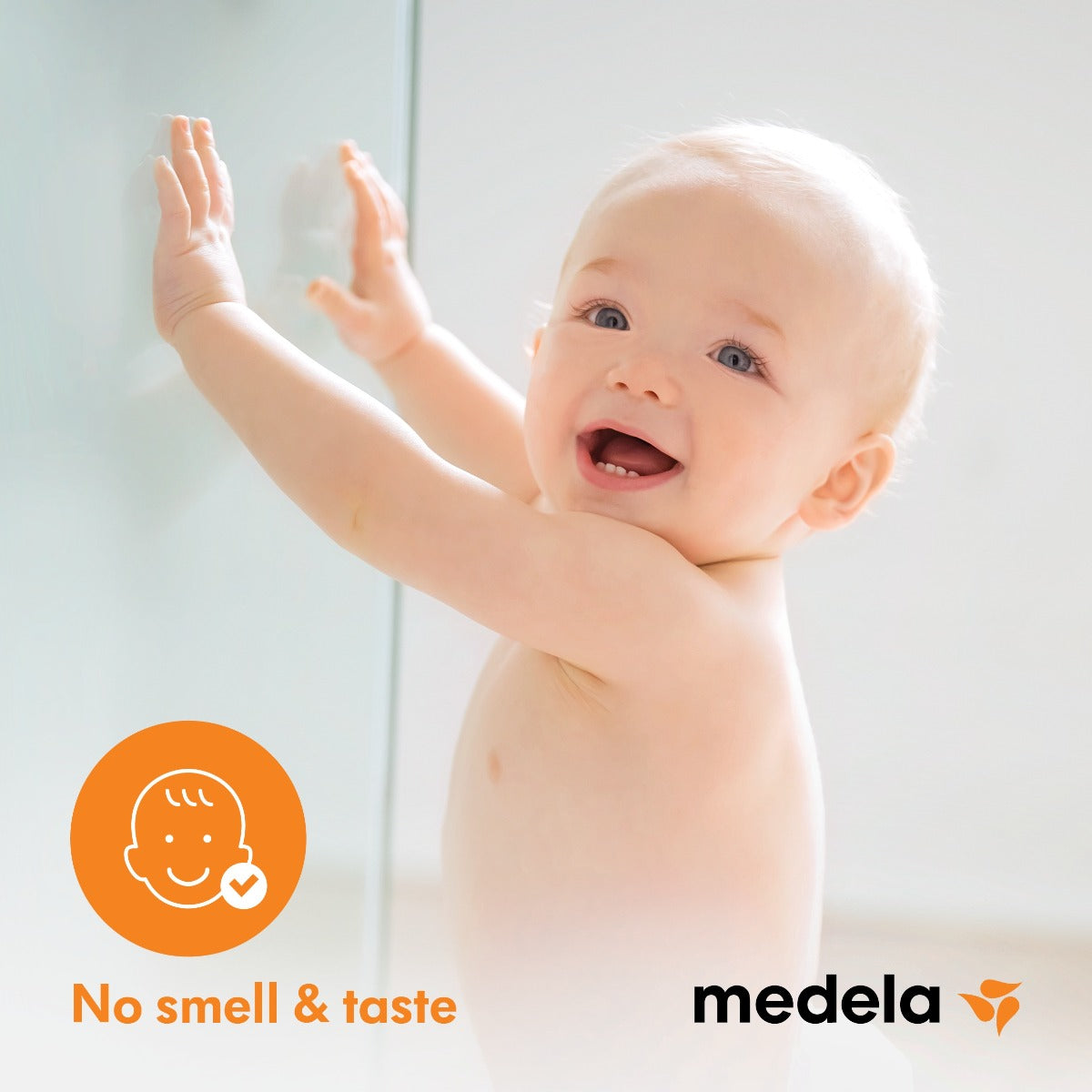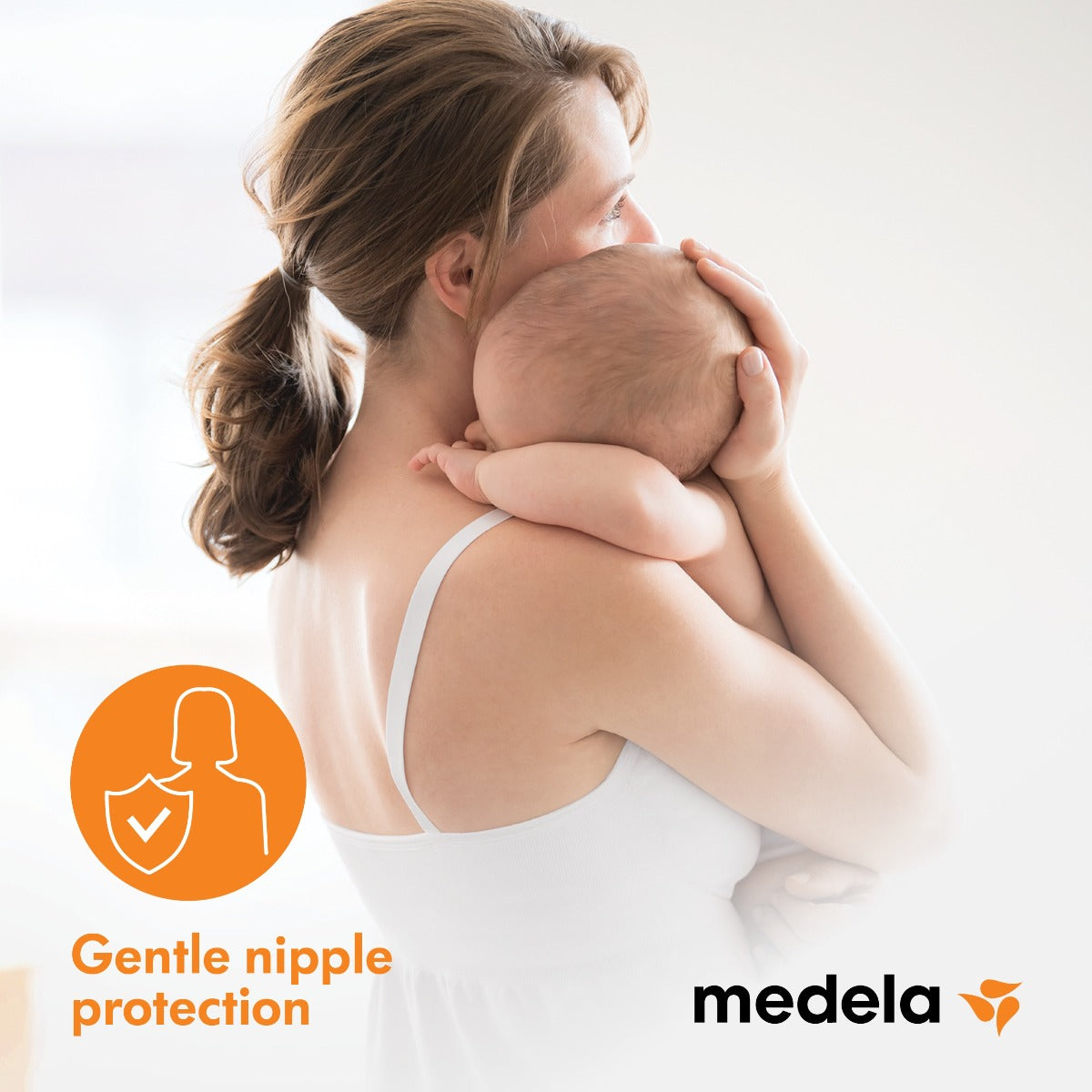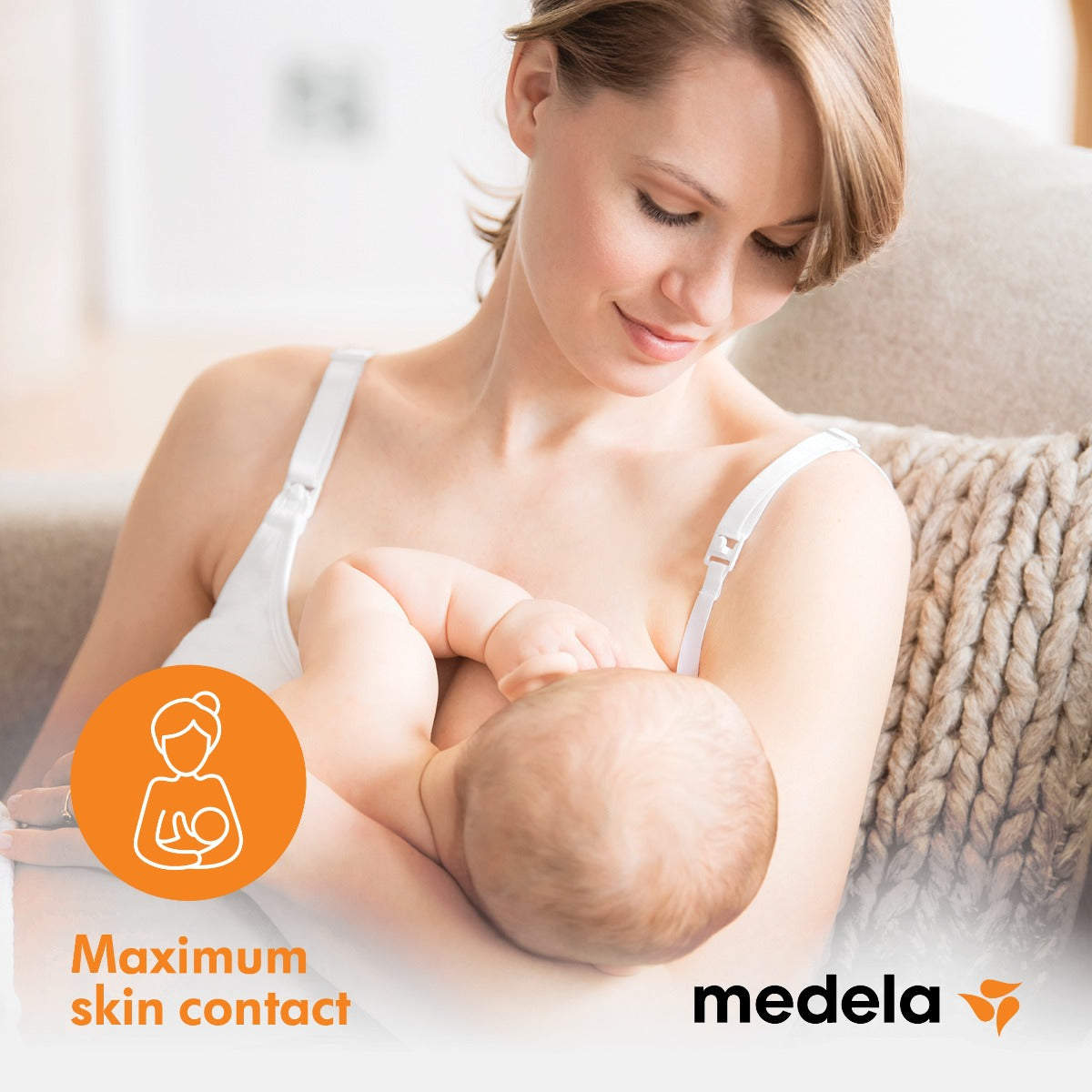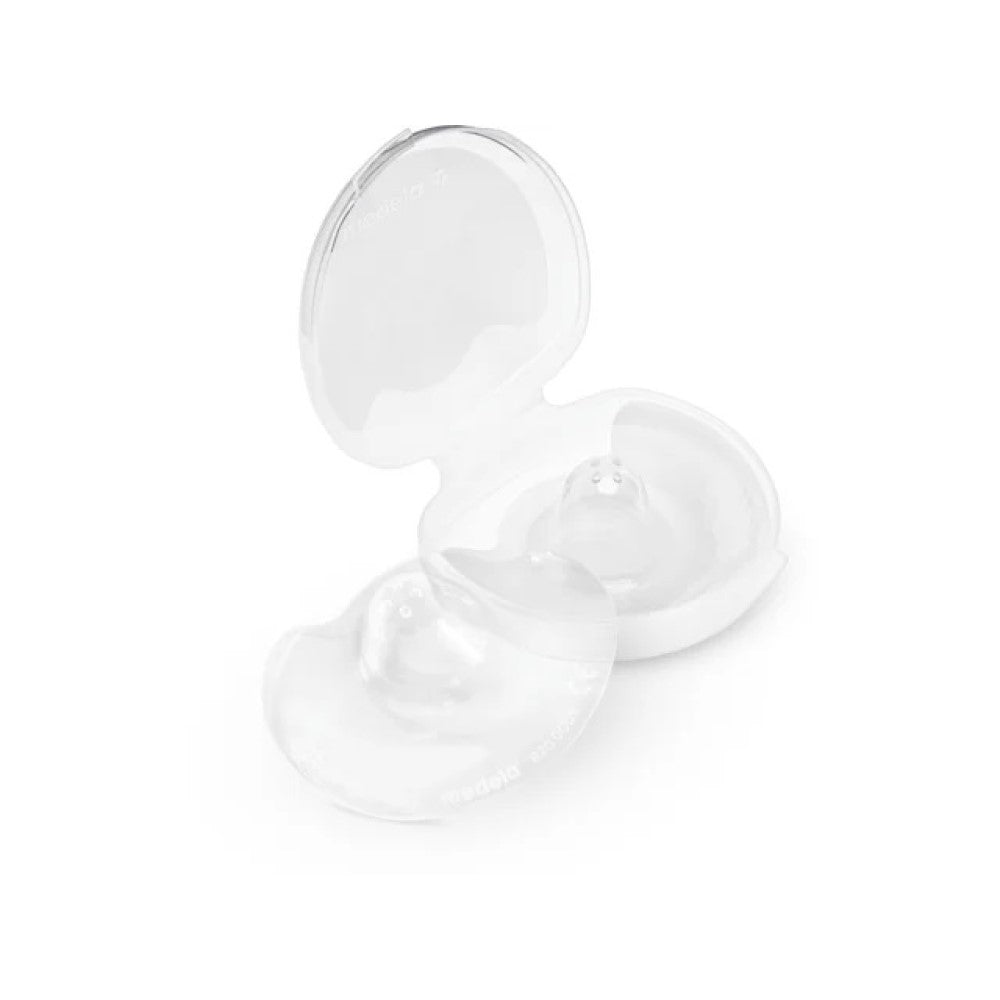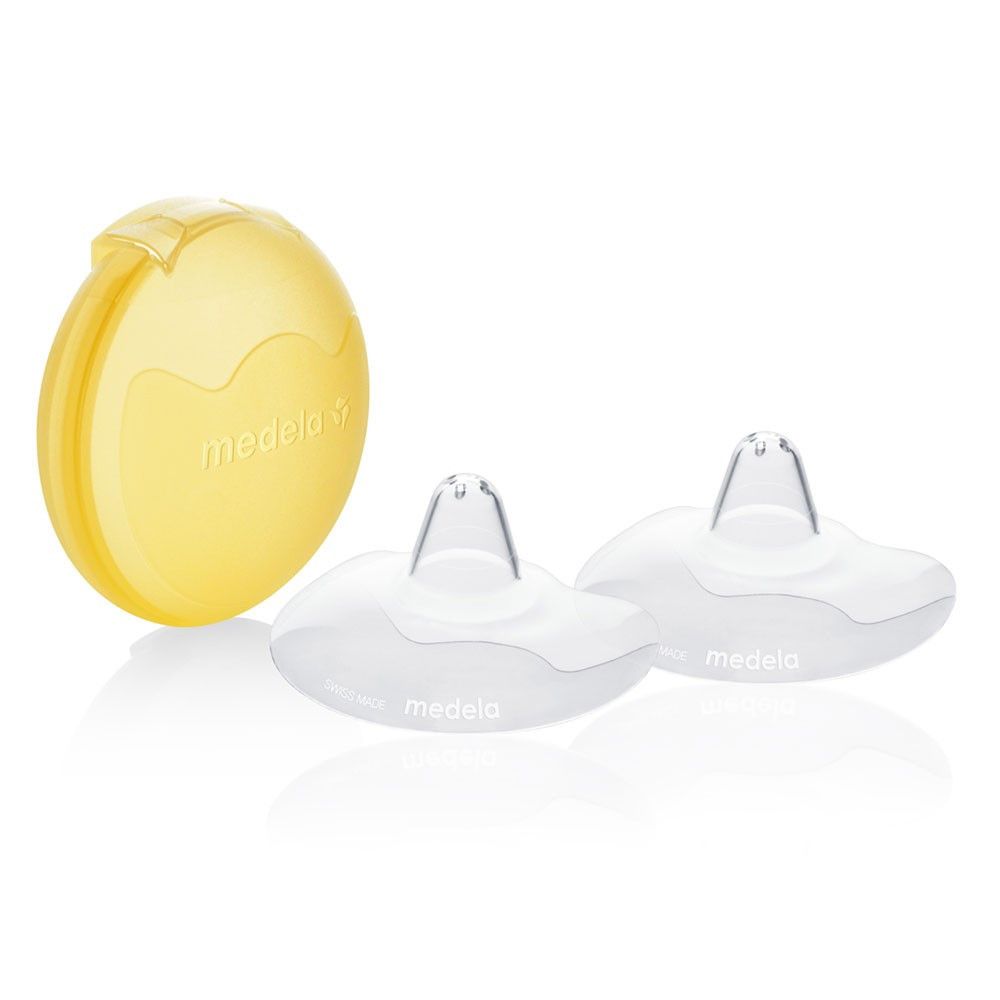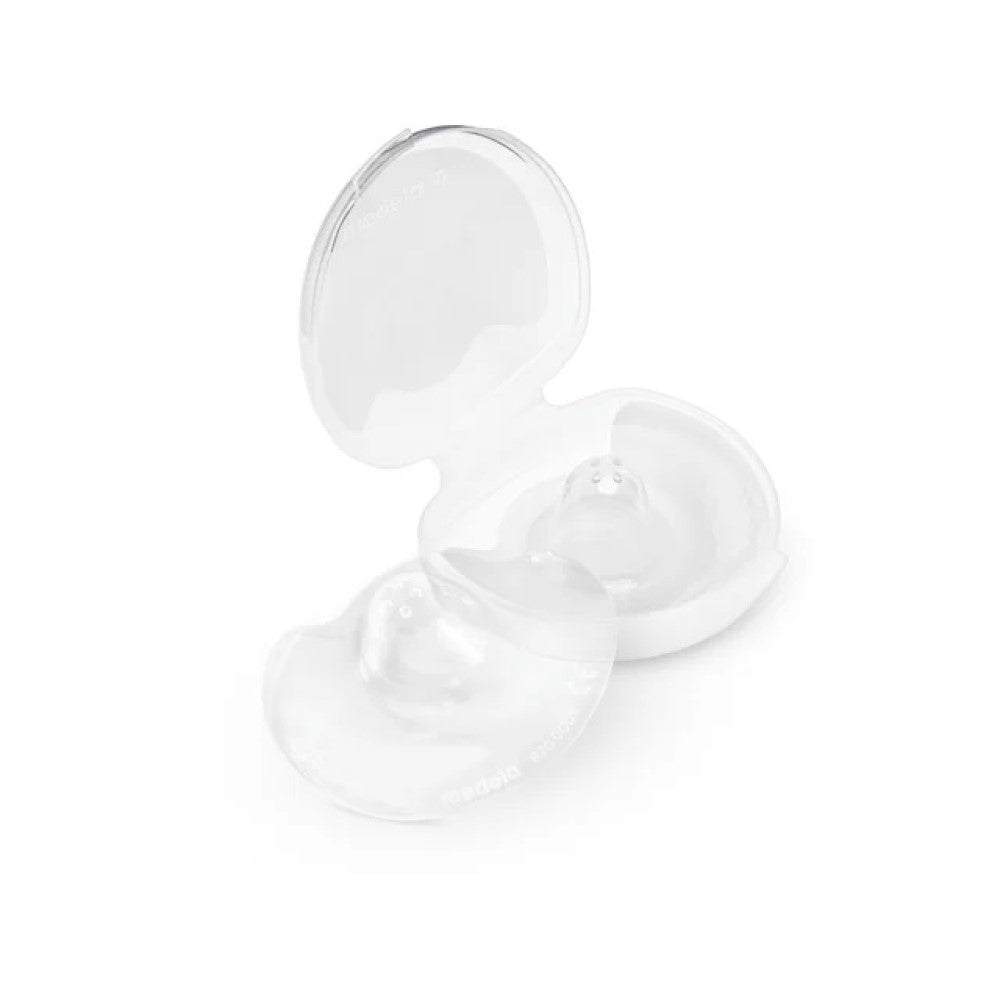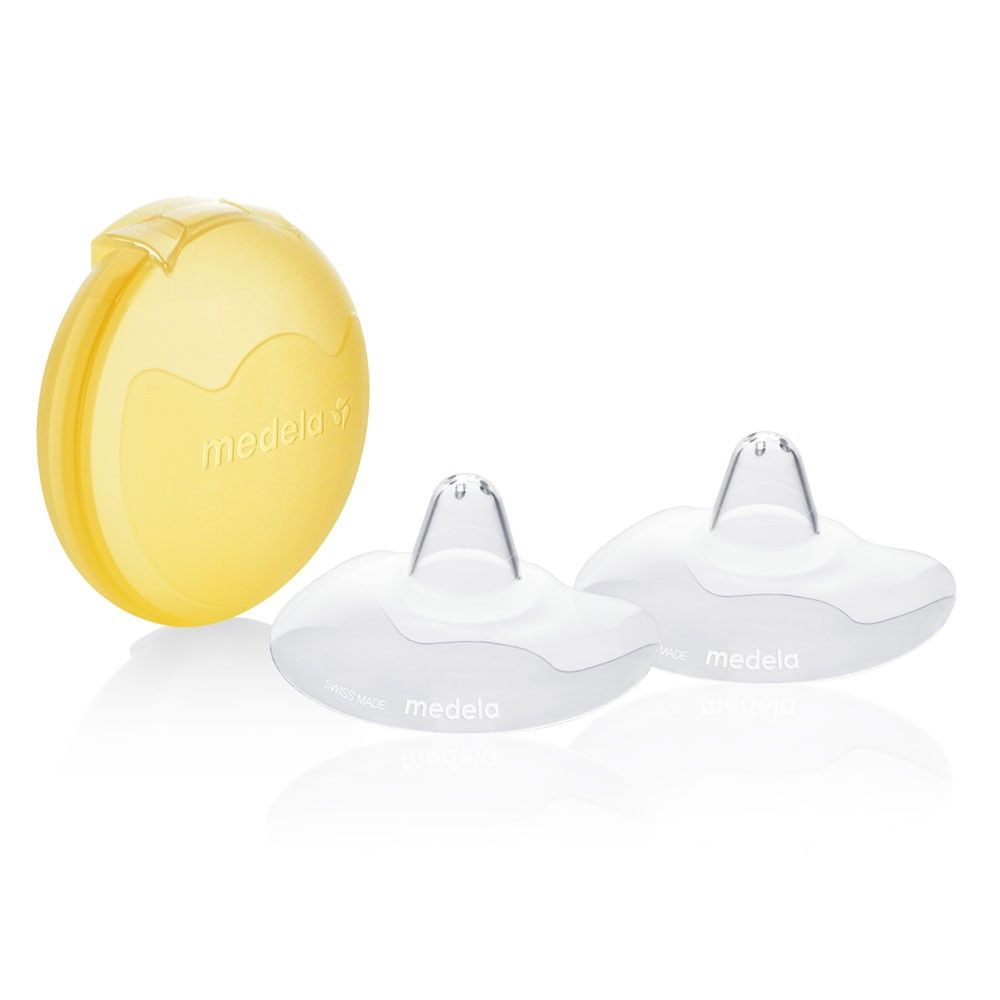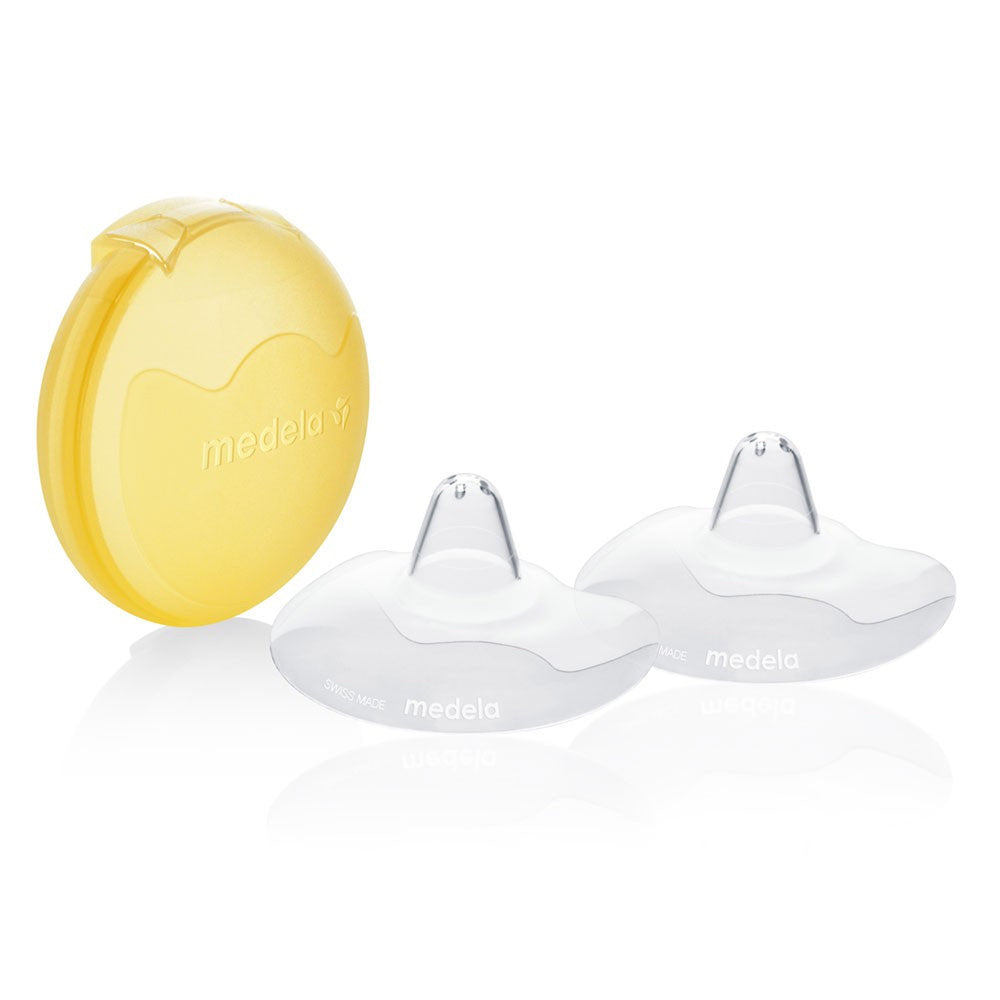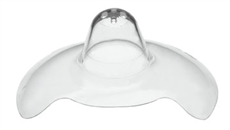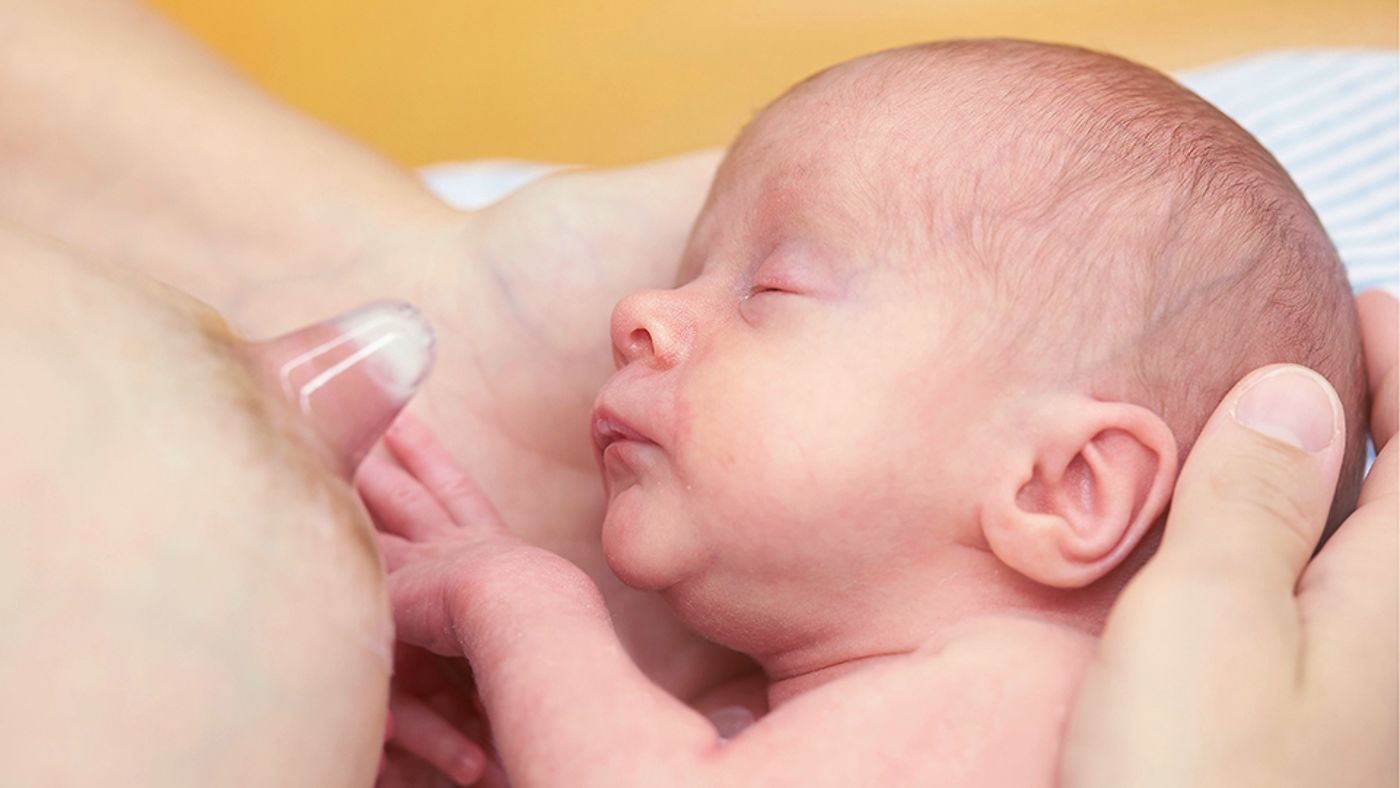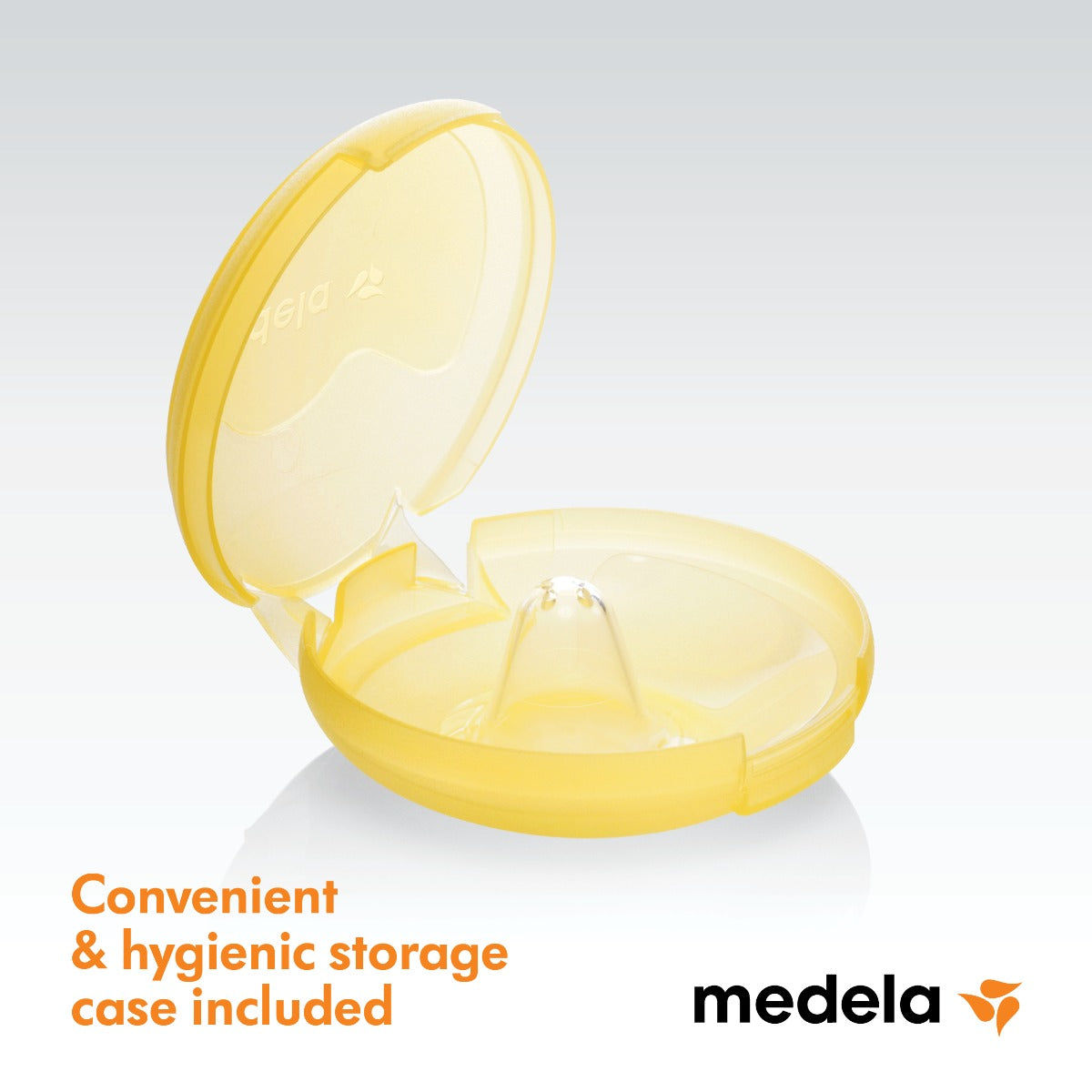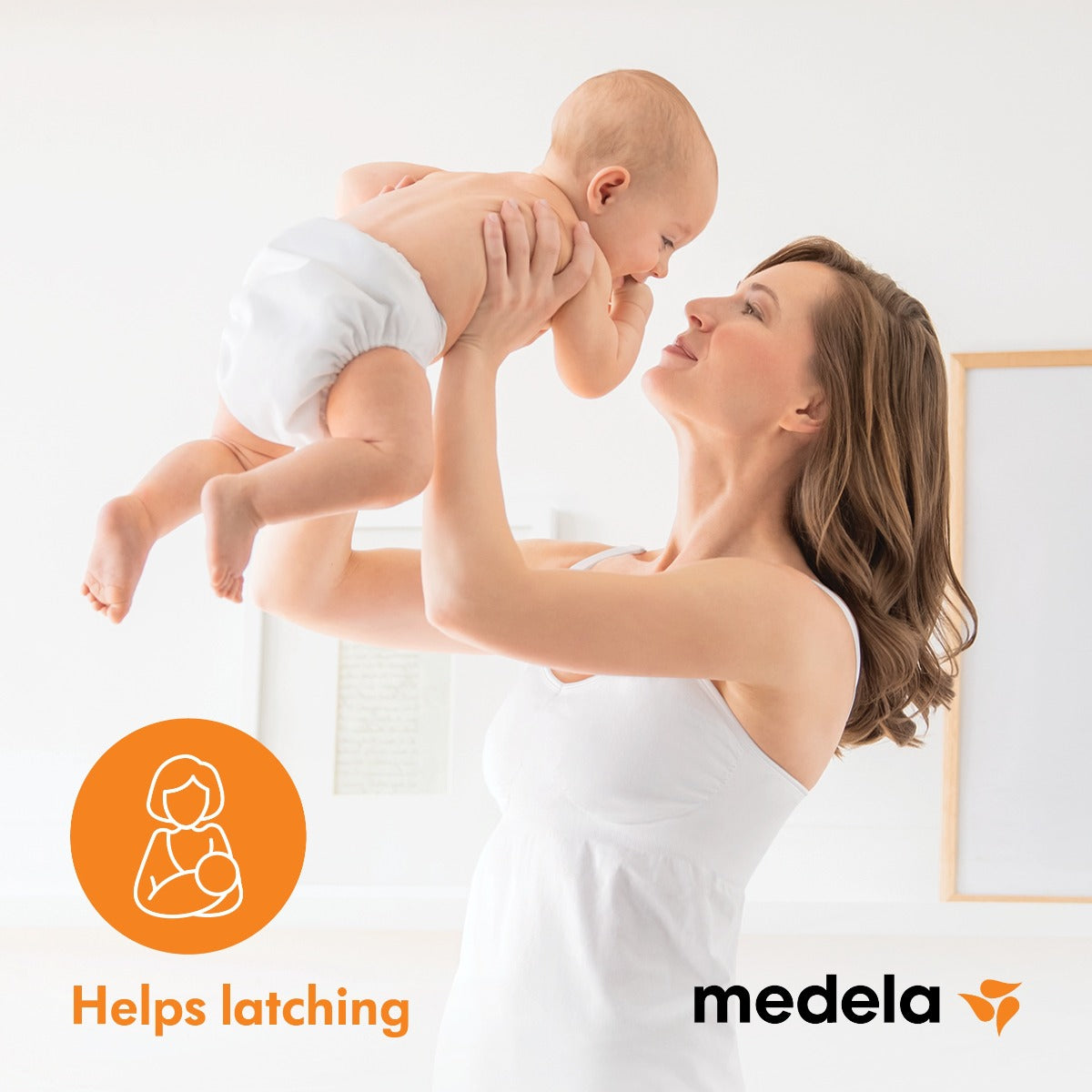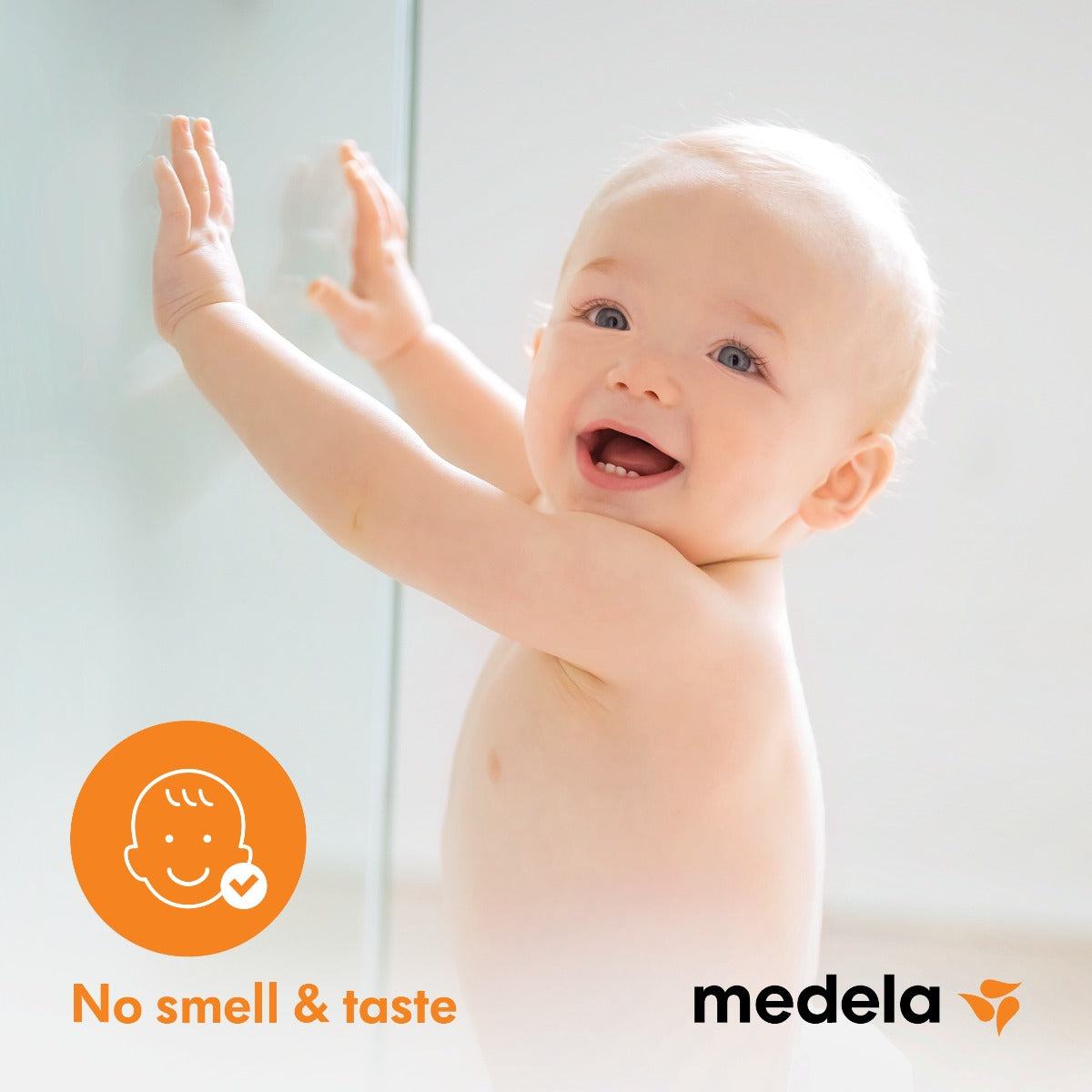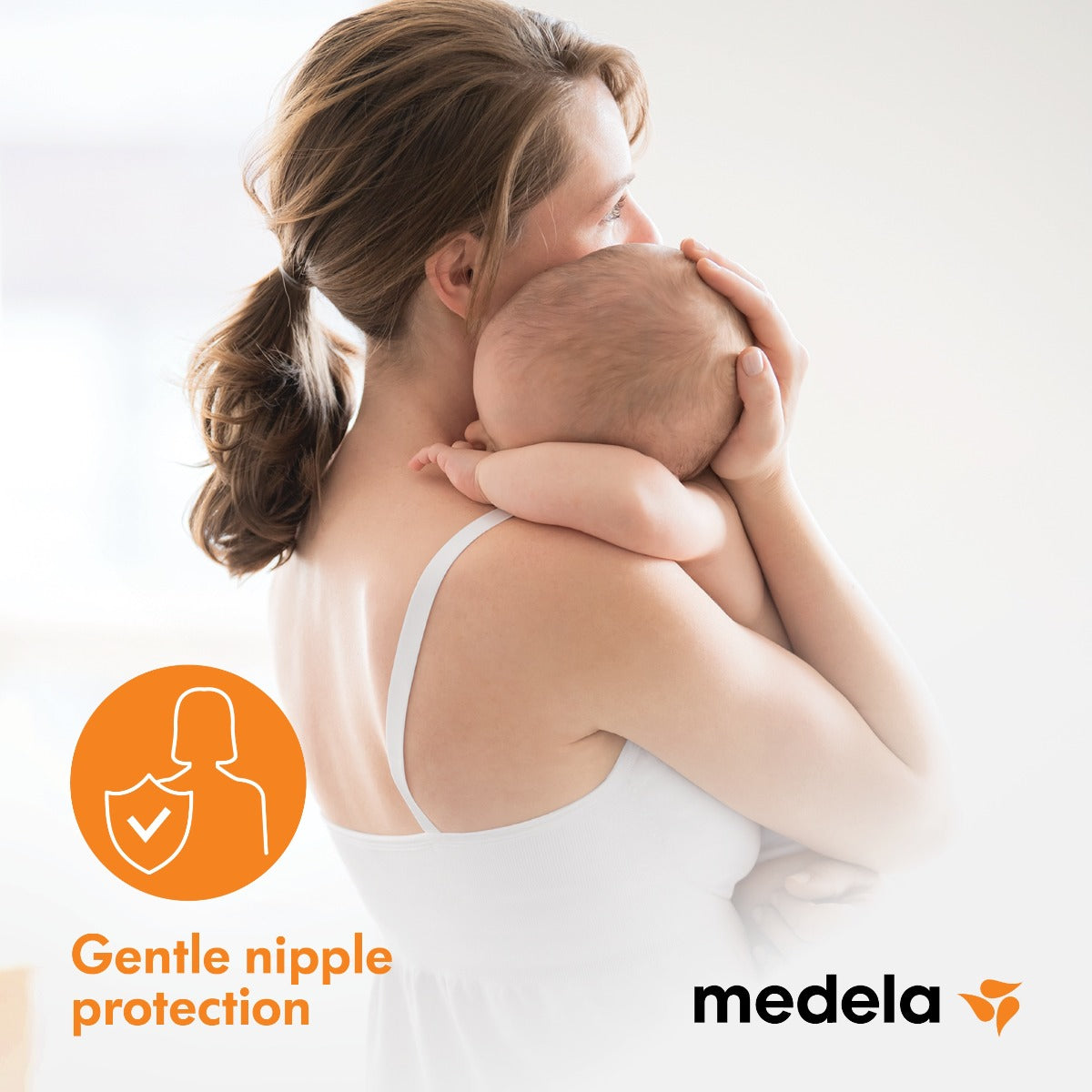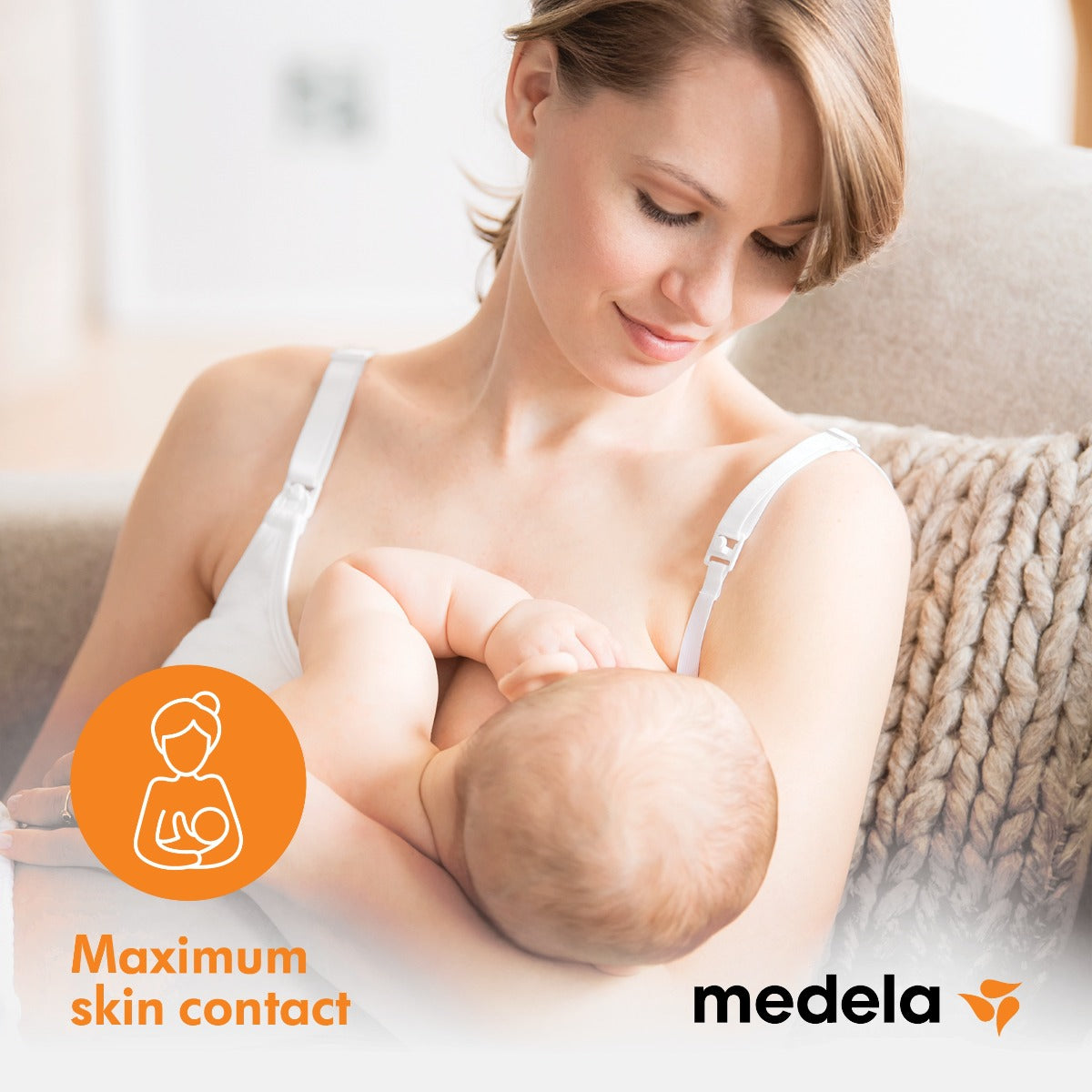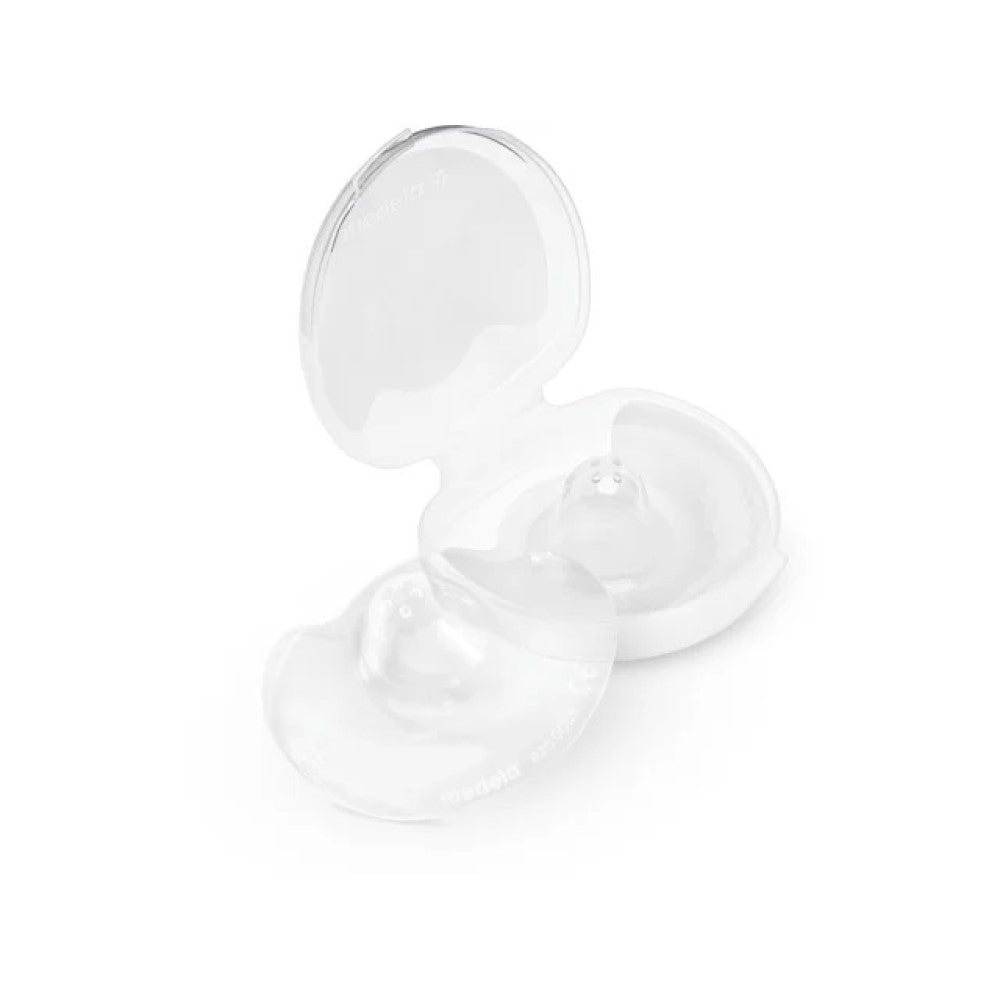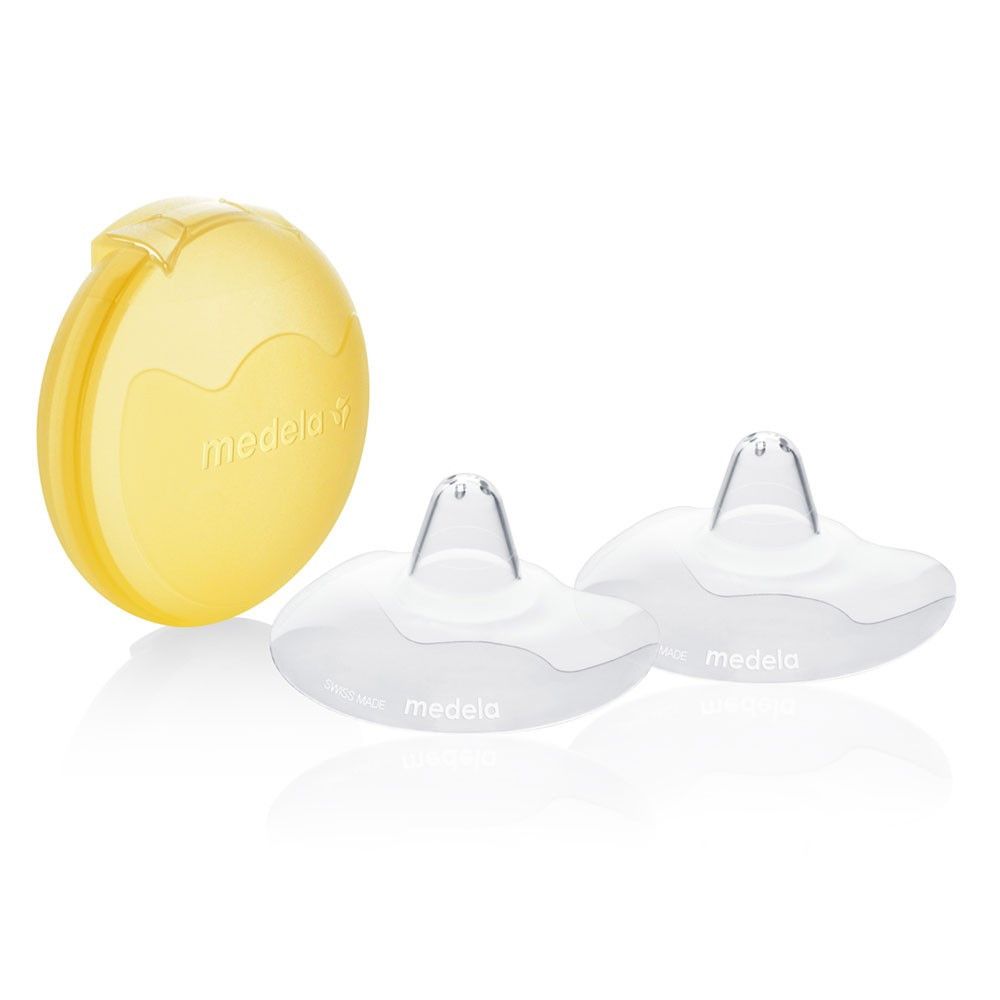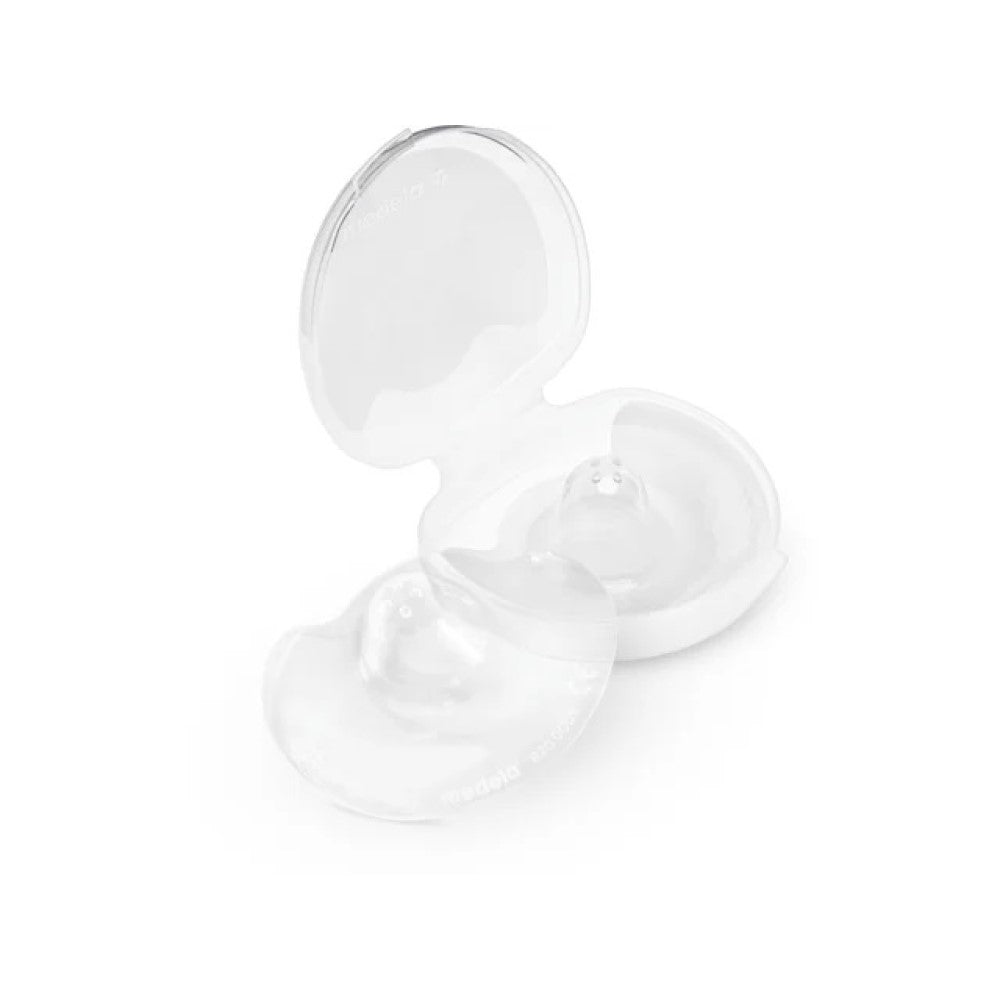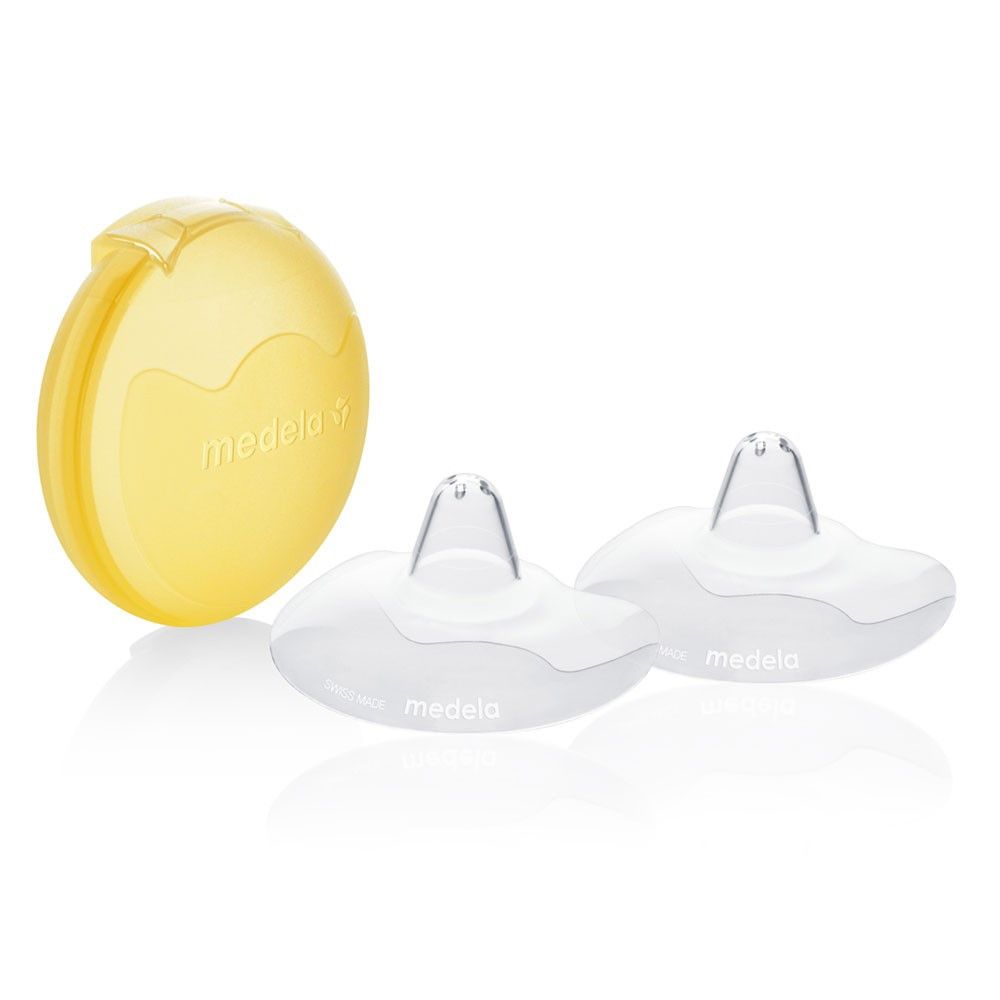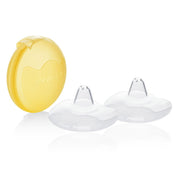Medela Contact Nipple Shields w/ Case, 2-pack (3 sizes)
Medela Contact Nipple Shields w/ Case, 2-pack (3 sizes)
Available in stock
Medela Contact Nipple Shields is an effective tool for professionals and moms to manage infants with latch-on problems, for moms with overactive let-downs or for flat, inverted and sore nipples. A nipple shield is a thin, flexible piece of silicone that you place over your nipple before breastfeeding to protect it. There are holes in the tip so your milk can pass through to your baby. Some mums worry that having a ‘barrier’ between themselves and their baby may interfere with the intimacy of breastfeeding, which is why Medela Contact™ nipple shields have an open section to ensure you still enjoy plenty of that special skin contact.
- Enable breastfeeding when latching on is difficult or painful or if you have flat or inverted nipples
- Protect sensitive, dry or cracked nipples during breastfeeding
- Made from transparent, ultra-thin, soft silicone that’s comfortable on sensitive skin
- Safe and taste-free for your baby
- Shape maximises skin contact between you and your baby
- BPA free
- Comes with case
Recommended for babies 0+ months.
Product Description
Product Description
Sizes:
- S: 16 mm
- M: 20 mm
- L: 24 mm
When to use nipple shields
There are three main circumstances when you might use nipple shields:
•If you have sore, cracked nipples, or are suffering from nipple pain.
•If you have flat or inverted nipples.
•If your baby has problems latching on to the nipple and is not drinking milk well.
Your lactation consultant or breastfeeding specialist will be able to advise you whether or not nipple shields are appropriate for you, and can also support you with your ongoing breastfeeding needs.
How to use nipple shields
After washing your hands with drinking-quality water and drying them thoroughly, grip the wings of the Contact™ nipple shield to guide it into place. Moistening the shield with drinking-quality water will help it stick. See the Contact™ nipple shield instructions for full details of how to put them on.The nipple shield should fit comfortably on your nipple without pinching – Medela nipple shields come in three sizes, so you can find the best fit for your type of nipple, our handy fitting guide has more details. Remember you’ll need to clean them after each use and disinfect once a day – this is often easiest using a microwave sanitising bag – see instructions for details of cleaning and sanitising. Contact™ nipple shields come with a convenient carry case so you can keep them safe between uses.
Nipple shields for sore nipples
Sore or cracked nipples can have a number of causes, so it’s important to get to the root cause before deciding on what to do about them. For example, if you have sore nipples you may want to try hydrogel pads or breast shells first, as well as seeking further lactation support. If these don’t improve the situation, Contact™ nipple shields can protect your nipples while still enabling breastfeeding – made from ultra-thin, soft silicone, they’re gentle even on sore, dry or cracked skin.
Nipple shields for flat or inverted nipples
If you have flat or inverted nipples your baby may find it harder to latch on, especially when she is small – but that doesn’t mean breastfeeding isn’t possible! An inverted or flat nipple might not touch the roof of your baby’s mouth during a feed, which can mean her sucking reflex isn’t triggered. Contact™ nipple shields can help by extending the reach of your nipple. And because they are flavour-free, your baby is unlikely to taste anything unusual while you’re using them.
Helping your baby to latch on
As outlined above, using a nipple shield can offer a baby who is struggling to latch on a larger, firmer target. Your lactation consultant or breastfeeding specialist can ensure your baby is latching well while you’re using the shield. You’ll also need to monitor your baby’s weight gain to ensure your milk supply is meeting her requirements.1 In general, nipple shields are a short-term solution – in time, as your baby’s suck strengthens and you get used to breastfeeding, you may well be able to start weaning off nipple shields.
FAQ
How do I sanitize the nipple shield?
Cleaning
- Rinse in cool water to remove breast milk.
- Wash in warm, soapy water.
- Rinse with clear water.
Note: Nipple shields can also be washed on top rack of dishwasher.
Drying & Storing
Allow nipple shield to air dry in a clean area and store dry with the nipple facing upwards. Do NOT store wet or damp parts.
Sanitizing
In addition to washing, you may sanitize your nipple shield once per day by following the instructions on Medela’s Quick Clean™ Micro-Steam™ bag or boiling.
If boiling your nipple shield:
- Choose a pot that is large enough so the nipple shield DOES NOT rest on the sides or bottom while boiling.
- Fill the pot with water and bring to a boil.
- Carefully drop nipple shield into boiling water, and boil for 10 minutes.
- Gently remove from water with tongs and place on a clean surface with nipple facing upwards. (For easier removal, add cool water to pot to prevent splashing.)
- See Drying & Storing section above for further instructions.
What is the diameter of the nipple shield at the base?
Medela’s Nipple Shields are available in 3 sizes: 16 mm, 20 mm, and 24 mm (measured at the base).
How can I determine what size nipple shield I will need?
Choose the size closest to your nipple base diameter. We recommend that you seek advice from a lactation consultant or other healthcare professional to determine the correct size for you and your baby.


